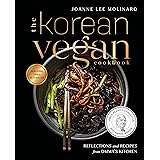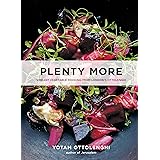The quest for effective, rapid fat loss often leads individuals to explore highly structured and metabolically potent dietary strategies. As the video above succinctly states, for those targeting significant body fat reduction, an approach centered on discrete, infrequent meals composed of extremely low-carbohydrate, high-fat, and adequate-protein foods presents an optimal **fat loss diet** strategy. This method leverages specific physiological mechanisms to shift the body into a state of consistent fat burning, moving beyond conventional caloric restriction to optimize metabolic function for lipolysis.
1. The Metabolic Advantage of Extreme Carbohydrate Restriction for Fat Loss
The core principle articulated in the video, “low, low, low carb,” is foundational to this effective fat loss protocol. Reducing carbohydrate intake to minimal levels, typically below 20-30 grams net per day, forces the body to deplete its glycogen stores rapidly. Once hepatic glycogen is exhausted, the liver initiates ketogenesis, producing ketone bodies from fatty acids. These ketones, beta-hydroxybutyrate (BHB) and acetoacetate, then become a primary fuel source for the brain and other tissues.
This metabolic shift into nutritional ketosis is highly advantageous for **fat loss**. It intrinsically promotes fat oxidation, as the body is primed to burn its own stored fat for energy. Furthermore, consistently low insulin levels, a direct consequence of minimal carbohydrate intake, create an environment conducive to lipolysis—the breakdown of stored triglycerides into fatty acids for energy. This constant mobilization of adipose tissue is key to shedding body fat efficiently.
Driving Factors in Ketogenic Fat Mobilization:
- Glycogen Depletion: The body first uses readily available glucose, then taps into glycogen stores. Once depleted, the metabolic machinery turns to fat.
- Insulin Suppression: Low insulin levels are critical. Insulin is an anabolic hormone that promotes fat storage and inhibits fat breakdown. Keeping insulin low unlocks fat reserves.
- Ketone Production: Ketones serve as an alternative, highly efficient fuel source, allowing the body to sustain energy levels while actively burning fat.
2. Strategic Meal Timing: Enhancing Fat Loss Through Intermittent Fasting
The video’s emphasis on “discrete meals with no snacks” and consuming food “once a day or twice a day” aligns perfectly with the principles of intermittent fasting (IF) and time-restricted eating (TRE). Integrating these patterns with an extremely low-carb dietary framework amplifies the body’s natural fat-burning capabilities. By extending the fasting window, the body remains in a prolonged state of fat oxidation, further depleting glycogen and maintaining low insulin levels.
During the fasting period, cellular repair processes like autophagy are upregulated, and human growth hormone (HGH) levels can increase, contributing to body composition improvements and potentially preserving lean muscle mass while facilitating **fat loss**. Eating discrete, satiating meals within a condensed window naturally limits calorie intake without the constant focus on strict counting, making adherence more manageable for many individuals.
Benefits of Strategic Meal Timing for Fat Loss:
- Sustained Fat Oxidation: Longer periods without food mean extended reliance on stored body fat for energy.
- Improved Insulin Sensitivity: Reduced frequency of insulin spikes can enhance the body’s response to insulin, preventing fat accumulation.
- Enhanced Satiety: Concentrating nutrient-dense foods into fewer, larger meals can lead to greater satiety and reduced hunger pangs throughout the day.
3. Nutrient Density and Satiety: The Carnivore-Inspired Core
When the video recommends “beef, butter, bacon, and eggs,” it’s pointing towards a highly nutrient-dense, fat-heavy, and protein-rich food selection that forms the backbone of a carnivore or heavily animal-based ketogenic diet. These foods are excellent sources of bioavailable protein, essential fatty acids, and a spectrum of vital micronutrients often missing in standard diets.
Beef, bacon, and eggs provide complete proteins, crucial for muscle maintenance and satiety. Protein has a high thermic effect of food (TEF), meaning a significant portion of its calories are burned during digestion. The high-fat content from butter, bacon, and beef is critical for satiety, reducing the urge to snack, and providing a stable energy source. These foods are also exceptionally low in carbohydrates, ensuring the body remains in a ketogenic state.
The Nutritional Prowess of Animal-Based Staples:
- Highly Bioavailable Protein: Supports lean muscle mass, boosts satiety, and contributes to a higher metabolic rate.
- Essential Fatty Acids: Provide sustained energy, support hormone production, and enhance nutrient absorption. Conjugated linoleic acid (CLA) in beef and butter may also offer specific metabolic benefits.
- Micronutrient Powerhouses: Rich in iron (heme iron from beef is highly absorbed), B vitamins, choline, zinc, and selenium, which are crucial for energy metabolism and overall health, preventing common nutrient deficiencies often seen in restrictive diets.
4. The Synergistic Metabolic Rationale Behind This Optimal Fat Loss Diet
The true power of this specific **fat loss diet** strategy lies in the synergy between its components. Extreme carbohydrate restriction initiates ketosis, making fat the primary fuel. Strategic meal timing, often through intermittent fasting, prolongs this fat-burning state and optimizes metabolic hormones. Finally, the selection of nutrient-dense, high-fat, and protein-rich animal foods ensures satiety, provides essential building blocks, and maintains metabolic efficiency without stimulating an insulin response.
This combined approach not only facilitates aggressive **fat loss** but also often leads to improved blood markers, enhanced mental clarity, and stable energy levels once fat adaptation is achieved. It fundamentally re-educates the metabolism to burn fat efficiently, a critical capability for both weight management and long-term health.
5. Practical Implementation and Key Considerations for Effective Fat Loss
Embarking on such a targeted fat loss journey requires careful planning. Initially, individuals may experience what is known as the “keto flu,” characterized by symptoms like headaches, fatigue, and irritability as the body transitions from glucose to fat metabolism. This is often mitigated by ensuring adequate electrolyte intake—sodium, potassium, and magnesium are crucial.
Sourcing high-quality beef, butter, bacon, and eggs is also important, as the nutritional profile can vary. While effective for significant **fat loss**, individual responses may differ. Monitoring energy levels, hunger cues, and overall well-being is key. For those with pre-existing health conditions or on medication, consulting with a healthcare professional or a registered dietitian is strongly recommended before adopting this highly restrictive approach to ensure it aligns with individual health needs and goals.











